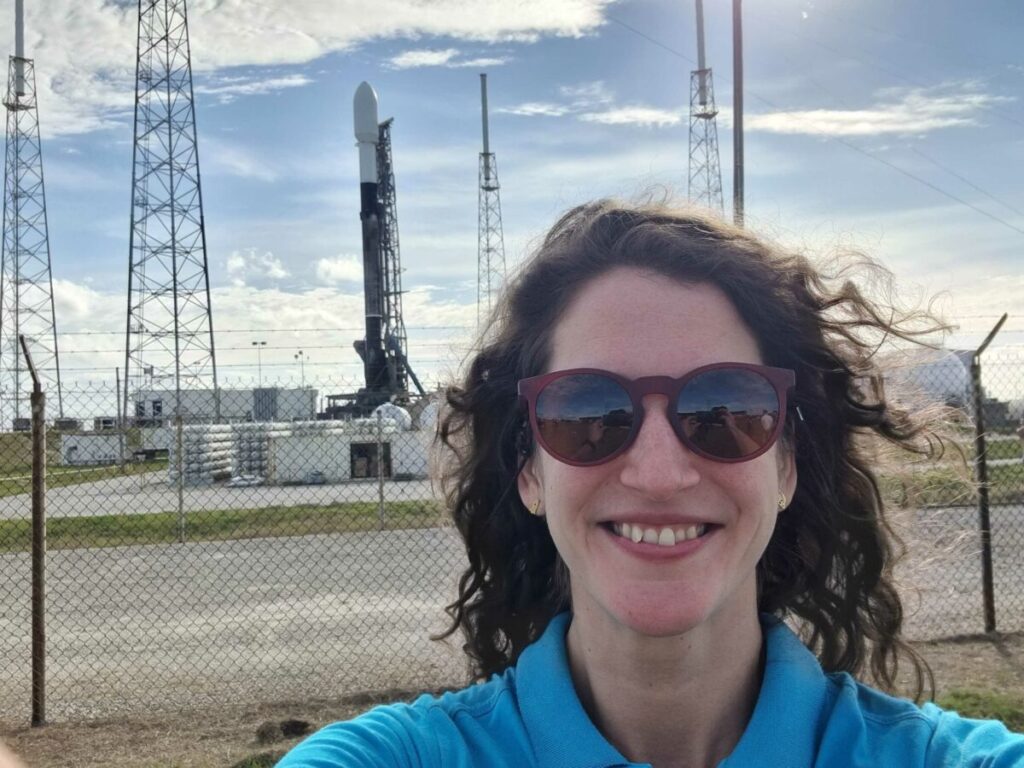NTNU’s first research satellite was launched from Florida at 16:25 Norwegian time this afternoon. The small satellite «HYPSO-1»’s mission is to observe algal blooms in ocean and lakes.
HYPSO-1 orbits the earth at an altitude of 500 kilometers. and uses approximately 90 minutes in one orbit, 16 rounds per day.
Read more: Historical launch of Norwegian small satellite
HYPSO-1 is equipped with a hyperspectral camera for remote sensing of ocean colour, which is based on a design by Fred Sigernes at the University Centre of Svalbard. Hyperspectral cameras can see a lot more than the human eye or traditional cameras are able to. The instrument can observe algae or if there is pollution in the ocean. The camera can be used both for research and to warn fish farms or others that might be threatened from harmful algal blooms.
But there is a lot that must work before the satellite can give this information. Now it remains to see whether the HYPSO-team can establish contact with the satellite and if all the systems work. First possible contact is 22:21 local time this evening.
« This is a big day for the Norwegian space industry and Norwegian universities that wish to be part of the rapid development in the industry of small satellites,» NTNU-rector Anne Borg, said.
She hopes Norway can develop a national program of marine research for small satellites.
«If Norway wants to keep a position as a space nation, the infrastructure and research on small satellites have to be strengthened,» Borg said.
100 people involved

After counting more thoroughly, all together more than 100 bachelor-, master- and PhD-students, and researchers, have been involved in the building of HYPSO-1 over a period of four years.
Ten PhD-degrees have been based on the project. That the mission is focused on observing the marine environment.
«NTNU has world-leading marine research and there is a need for hyperspectral imaging, especially of the oceans,» Evelyn Honoré-Livermore, said.
She is a PhD-student at NTNU’s Department of Electronical Systems and one of the PhD-students at Centre of Excellence NTNU AMOS. She has been the project manager.
Recently the team got 25 million NKR from the Norwegian Research Council to develop the use of HYPSO-1 further.
«This contributes to NTNU’s possibility to help marine researchers using hyperspectral imaging», Tor Arne Johansen, professor at the Department of Technical Cybernetics.
Different types of use
Hyperspectral imaging can be used in many ways.
«Hyperspectral analysis can replace physical inspections, for example classify pills that looks the same to a human eye, to tell whether berries or potatoes are rotten or fine, to tell the timeline of a bruise after violence or classify different types of forests,» Honoré-Livermore tells.
The possibilities are endless.
The camera detects more than hundred different color nuances, the chemical information or the so-called spectral signature.
«HYPSO-1 takes technology that is well tested in laboratories and industrial production in controlled environments out in space to observe the earth in new ways, Professor Johansen said.
New space age
HYPSO-1 is financed mainly from NTNU and the Norwegian Research Council with important support from the Norwegian Space Agency and ESA.
Several universities are developing small satellites now.
«A huge growth is expected in the space industry in the coming years. The Norwegian industry has ambitions and a good position to compete with big international players. We want to research the technology that will be used tomorrow, Dean Ingrid Schjølberg at the Faculty of Information Technology and Electronics, said.
A small satellites life and death
It has taken four years to build HYPSO-1. When it is launched all the components are turned off. Step by step they will be re-started.
«Everything has to work before you can start taking pictures,» Honoré-Livermore said.
According to the plan HYPSO-1 will orbit the earth for five years. When the «lifetime» is over HYPSO-1 will fall towards the earth and be burned to ashes in the atmosphere.
NTNU has now entered the new space age.
«The value of the research, education and services that can be provided, will soon level out the costs,» Honoré-Livermore said.
A democratization of the space industry is ongoing.
What is HYPSO-1?
- A small satellite 10 x 20 x 30 cm that weighs 7 kilos with 6-liter volume.
- HYPSO stands for HYPer-spectral Smallsat for ocean Observation
Contacts
- Researcher: Roger Birkeland roger.birkeland@ntnu.no. Tel. + 47 977 08 109
- PhD-student Evelyn Honoré-Livermore: evelyn.livermore@ntnu.no. Tel: +73 559 112
- Rector Anne Borg via Live Oftedahl: live.oftedahl@ntnu.no. Tel: + 47 92 222 481
- Dean Ingrid Schjølberg: ingrid.schjolberg@ntnu.no. Tel: + 47 930 66 355

